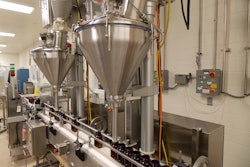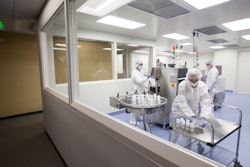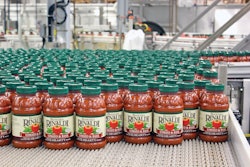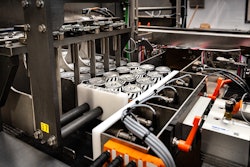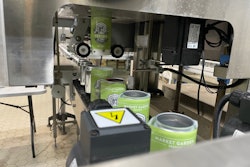1. Greater throughput and reliability with servos: For more than a decade, servo-motor technology has increasingly found its way into dry filling lines to become a mainstream technology for all package sizes—from club packs to stick packs, K-Cups, and single-serve packs. This technology allows precise control of acceleration rates and revolutions for greater accuracy and repeatability as well as reduced product giveaway. Along with the accuracy of turning on and off “cleanly” with every fill, servos also can automatically shut down in the event of a line stoppage, eliminating the burnout of old AC motor and clutch-brake designs. Also in contrast to older AC systems, servos use fewer parts for reduced maintenance. These benefits, taken as a whole, have allowed greater management of complex lines and greater confidence to expand, for instance, a K-Cup filling line from two to eight or more lanes.
2. Quicker changeover: Along with greater control and reliability of dry filling lines, machine design enhancements open new opportunities for making incremental gains in capacity, especially in the area of changeover. For example, when reconfiguring the appropriate number of filling heads for a change in package or product, new designs offer easy access to parts, speeding cleaning and changeover. This can be seen in the reduced tools, and in some cases tool-less changeover procedures, that contribute to greater productivity for greater throughput, while at the same time reducing the risks of unnecessary tools and “loose” parts in the production environment.
3. More powerful controls: The wide adoption of programmable controls has led to more powerful management and integration of filling equipment. Current-generation dry filling equipment is typically integrated with upstream infeed systems and downstream baggers, such as horizontal or vertical form/fill/seal systems. Additionally, checkweighers further downstream communicate with that equipment to automatically adjust feed and fill settings and prevent drift in weight and other parameters. The advent and adoption of control and software standards have led to more cost-effective, plug-and-play compatibility for great reductions from software programming to hardware costs that range from wiring and maintenance to spare-parts stores.



